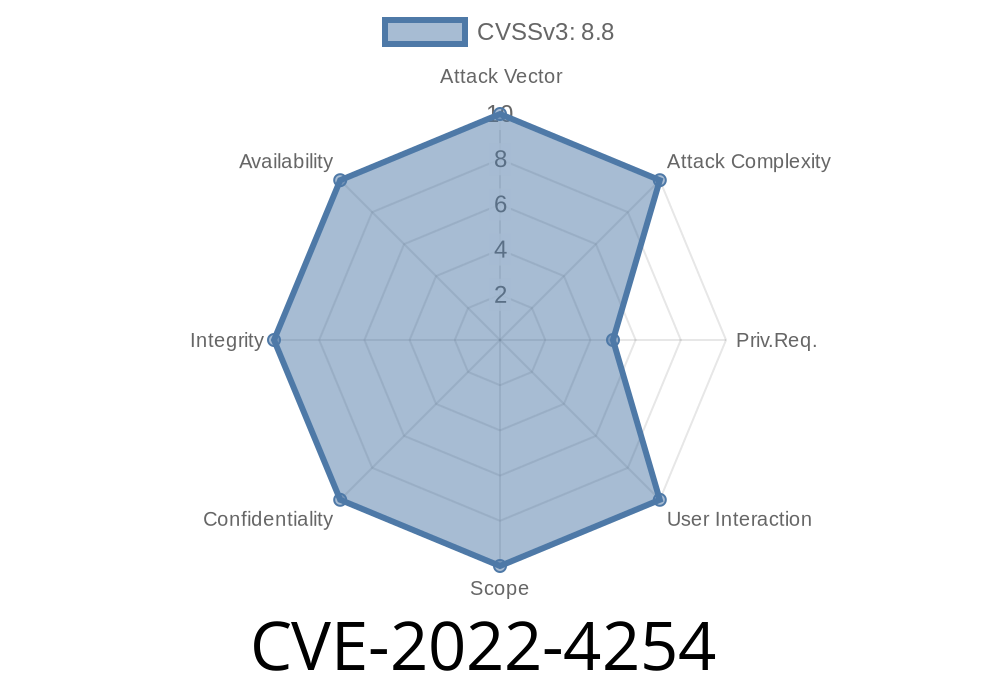When it comes to securing Linux systems in an enterprise, SSSD (System Security Services Daemon) is a powerhouse. It handles authentication, identity lookup, and connection to directory services like LDAP or Active Directory. But in late 2022, security researchers found a dangerous bug—CVE-2022-4254—hiding in plain sight. This flaw made it possible for attackers to inject malicious LDAP queries, with far-reaching consequences.
Let’s break down what happened, how the exploit works, and how you can protect your systems.
What is CVE-2022-4254?
CVE-2022-4254 is a vulnerability in SSSD’s certificate mapping library (libsss_certmap). The main issue is *LDAP injection*: user-supplied certificate data wasn’t properly sanitized before SSSD plugged it into LDAP search filters.
That means a clever attacker could inject LDAP filter syntax, tricking SSSD and potentially messing with authentication checks or getting unauthorized access.
SSSD’s upstream issue tracker Red Hat Bugzilla #2138547 gives the official summary:
"libsss_certmap fails to sanitize certificate data used in LDAP filters"
How Did the Flaw Happen?
When a user tries to log in with a smart card or certificate, SSSD builds an LDAP filter based on information in the user's X.509 certificate (like email or Subject Alternative Name). The certificate data is embedded *directly* into an LDAP filter string—without proper escaping.
Here’s a simplified example of the code pattern that caused the problem
/* Pseudo-code snippet */
char filter[MAX_LEN];
snprintf(filter, MAX_LEN, "(mail=%s)", cert_email); // Potentially unsafe
If cert_email contains an unexpected character—like a parenthesis or a wildcard—this could reshape the filter and trick LDAP into returning the wrong user, skipping access checks, or even exposing sensitive data.
An attacker creates a fake certificate where the subject's email field looks like this
*)(uid=*)(
When SSSD receives this certificate during login, it builds an LDAP filter like so
snprintf(filter, MAX_LEN, "(mail=%s)", cert_email);
// Becomes:
(mail=*)(uid=*)(...)
3. The Consequence
The filter, now (|(mail=*)(uid=*)), can return *all users* (because uid=* matches everyone). SSSD might grab the wrong account, let the attacker in, or dump extra sensitive user details—depending on how access is configured.
Proof-of-Concept: LDAP Injection in Practice
Here’s an example of how an LDAP query can be poisoned by unsanitized input.
Original safe filter
(mail=johndoe@example.com)
Attacker's input
*)(uid=*)(mail=*
After injection
(mail=*)(uid=*)(mail=*)
This breaks the intended search logic; LDAP responds with users the attacker wasn't supposed to see.
Real-World Impact
If your SSSD trusted smart cards or certificates for login, attackers could bypass authentication checks, escalate privileges, or harvest user information.
Fixes and Recommendations
- Upgrade: Always apply latest security patches. SSSD’s maintainers fixed this with proper sanitization in certificate handling (SSSD PR #6617).
- Mitigate: If you can’t update, restrict certificate-based logins and watch your LDAP logs for strange or wildcard-heavy filters.
- Best Practice: NEVER insert external input directly into filter strings—use escaping functions!
Relevant patch excerpt
/* Secure filter creation with ldap_escape() */
ldap_escape(cert_email, filter, MAX_LEN, LDAP_ESCAPE_FILTER);
snprintf(filter, MAX_LEN, "(mail=%s)", filter);
More Info & References
- CVE Security Tracker
- Red Hat Bugzilla #2138547
- Upstream Patch Discussion
Conclusion
CVE-2022-4254 is a reminder that small mistakes in input handling can break enterprise security wide open, especially where authentication and identity are involved. Always sanitize and validate everything—especially when plugging data into queries.
If your Linux fleet uses SSSD with certificate mapping, patch up now to avoid nasty surprises!
Timeline
Published on: 02/01/2023 17:15:00 UTC
Last modified on: 02/09/2023 13:41:00 UTC
